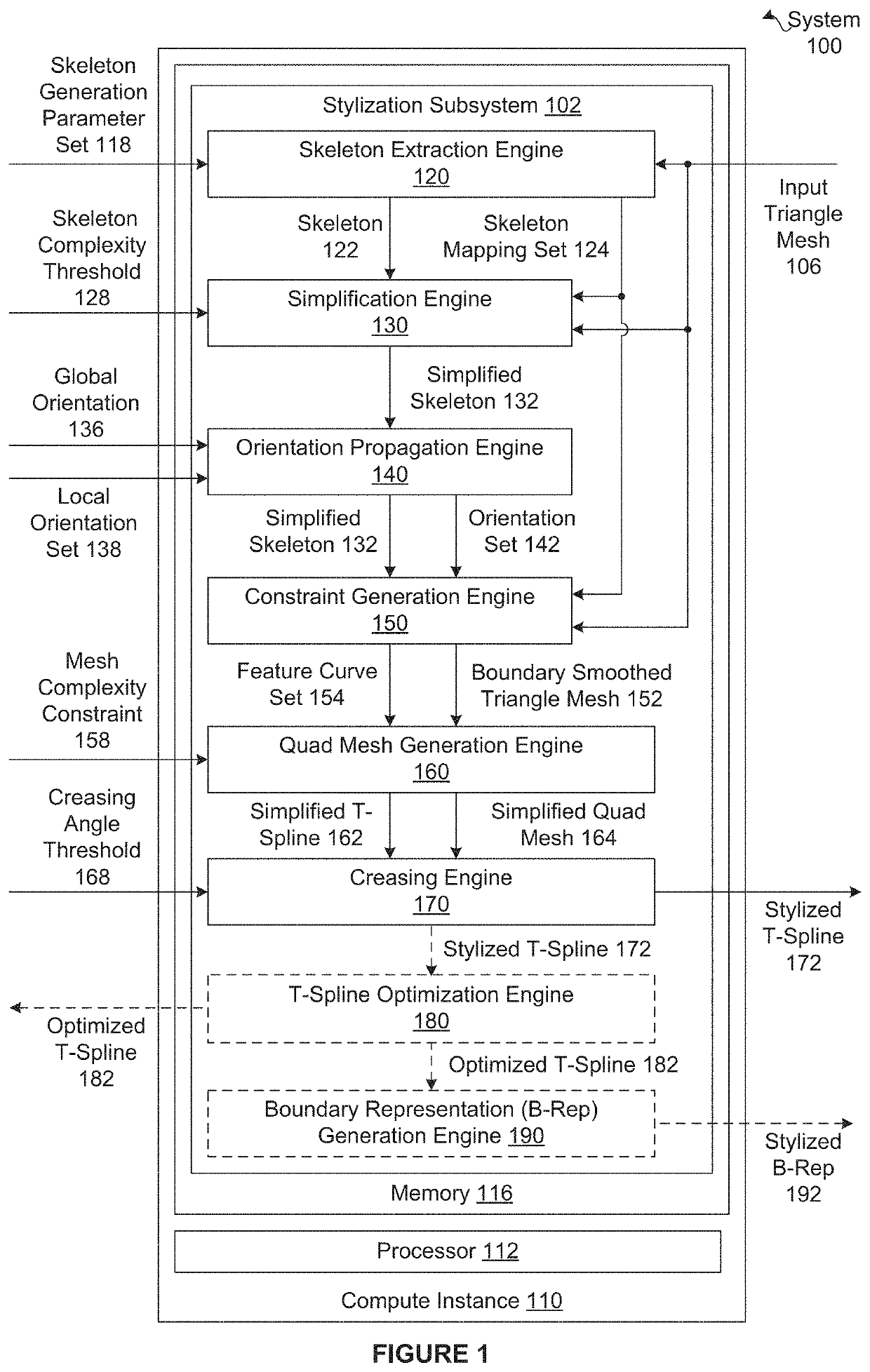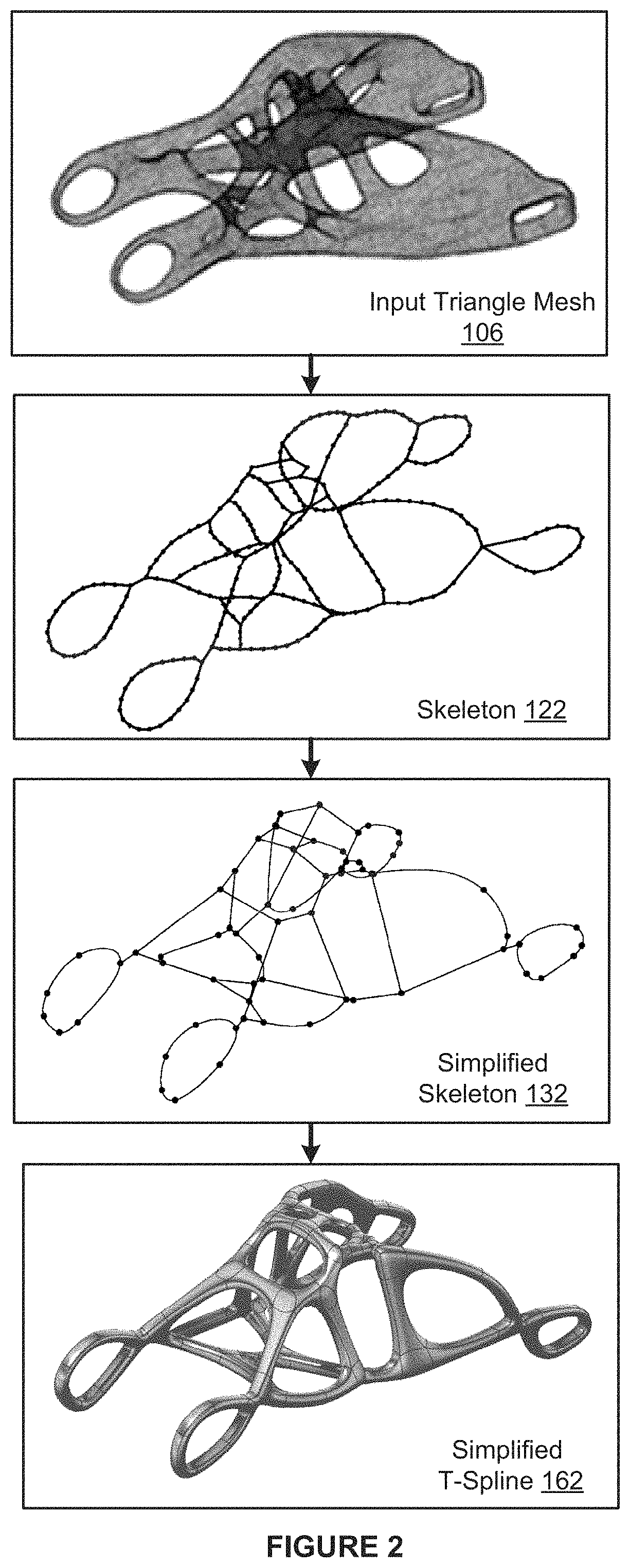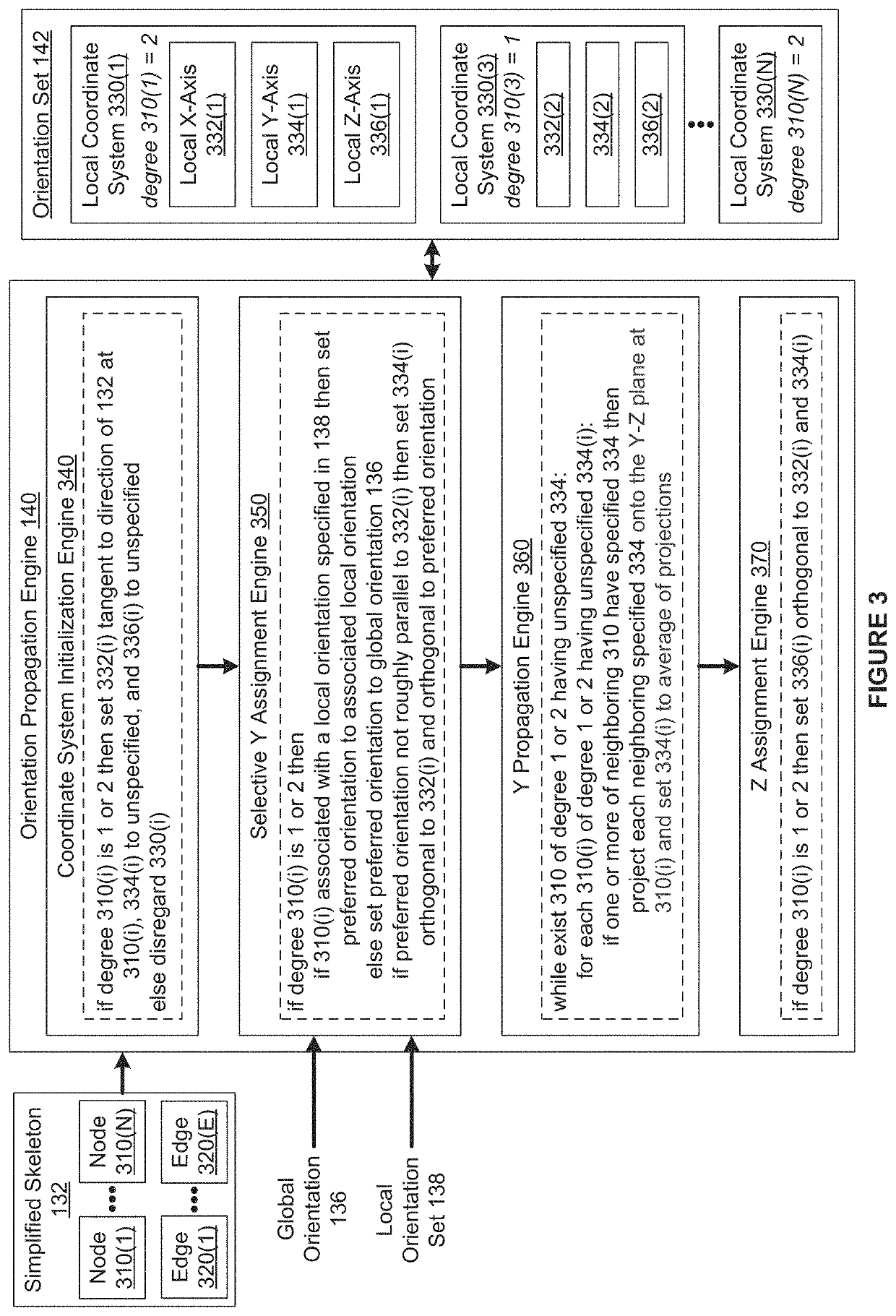Techniques for generating stylized quad-meshes from tri-meshes
a technology of tri-meshes and stylized quad-meshes, which is applied in the direction of design optimisation/simulation, total factory control, instruments, etc., can solve the problems of inefficiency in manufacturing the organic shapes included in the design, time-consuming grinding operations, and design not usually reflecting non-functional preferences, so as to improve the overall aesthetics and manufacturability of a given 3d object design, the effect of improving the overall aesthetic quality and manufacturability of those designs
- Summary
- Abstract
- Description
- Claims
- Application Information
AI Technical Summary
Benefits of technology
Problems solved by technology
Method used
Image
Examples
Embodiment Construction
[0002]Embodiments relate generally to computer-aided design and computer-aided design software and, more specifically, to techniques for generating stylized quad meshes from tri-meshes.
Description of the Related Art
[0003]Generative design for three-dimensional (“3D”) objects is a computer-aided design (“CAD”) process that automatically synthesizes designs for 3D objects that satisfy any number and type of high-level goals and design constraints. In a typical generative design flow, a user specifies functional goals and design constraints, and a generative design application then executes a variety of multi-objective optimization algorithms to optimize potential solutions based on the functional goals and design constraints. This type of design process is an evolutionary process that can generate a vast number (e.g., thousands) of complex geometrical designs that satisfy the functional goals and design constraints. The generative design application presents those designs to the user ...
PUM
 Login to view more
Login to view more Abstract
Description
Claims
Application Information
 Login to view more
Login to view more - R&D Engineer
- R&D Manager
- IP Professional
- Industry Leading Data Capabilities
- Powerful AI technology
- Patent DNA Extraction
Browse by: Latest US Patents, China's latest patents, Technical Efficacy Thesaurus, Application Domain, Technology Topic.
© 2024 PatSnap. All rights reserved.Legal|Privacy policy|Modern Slavery Act Transparency Statement|Sitemap



